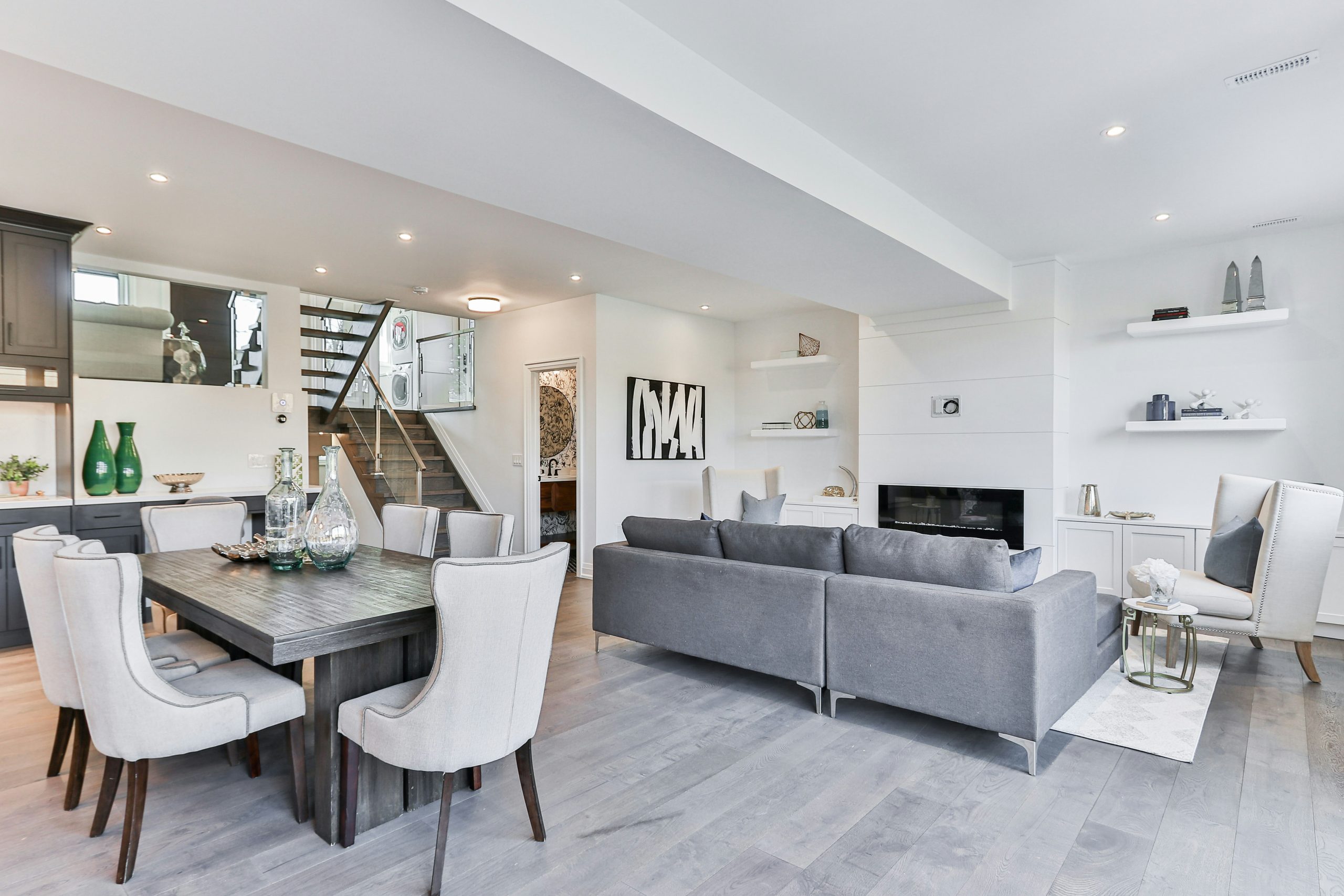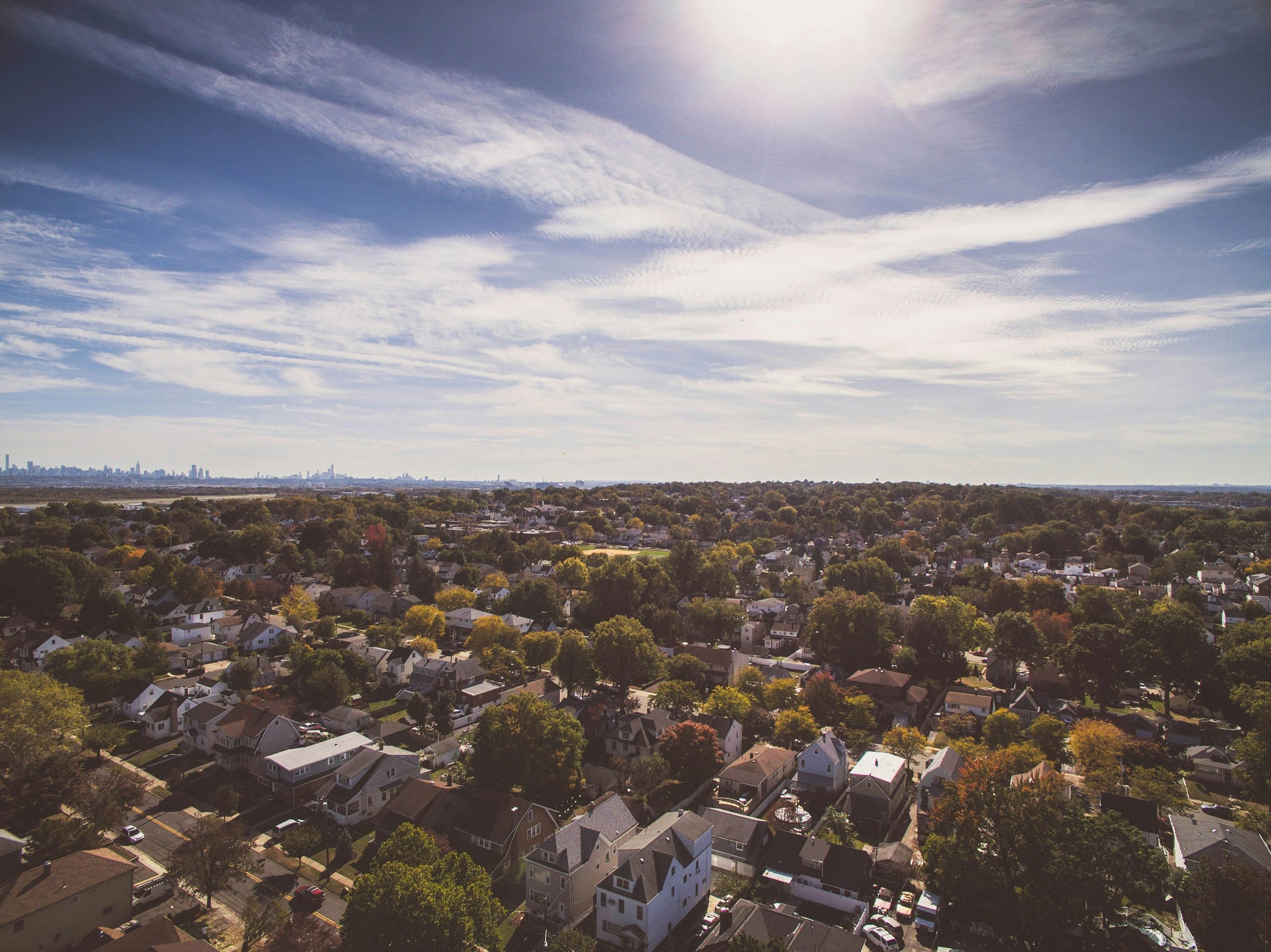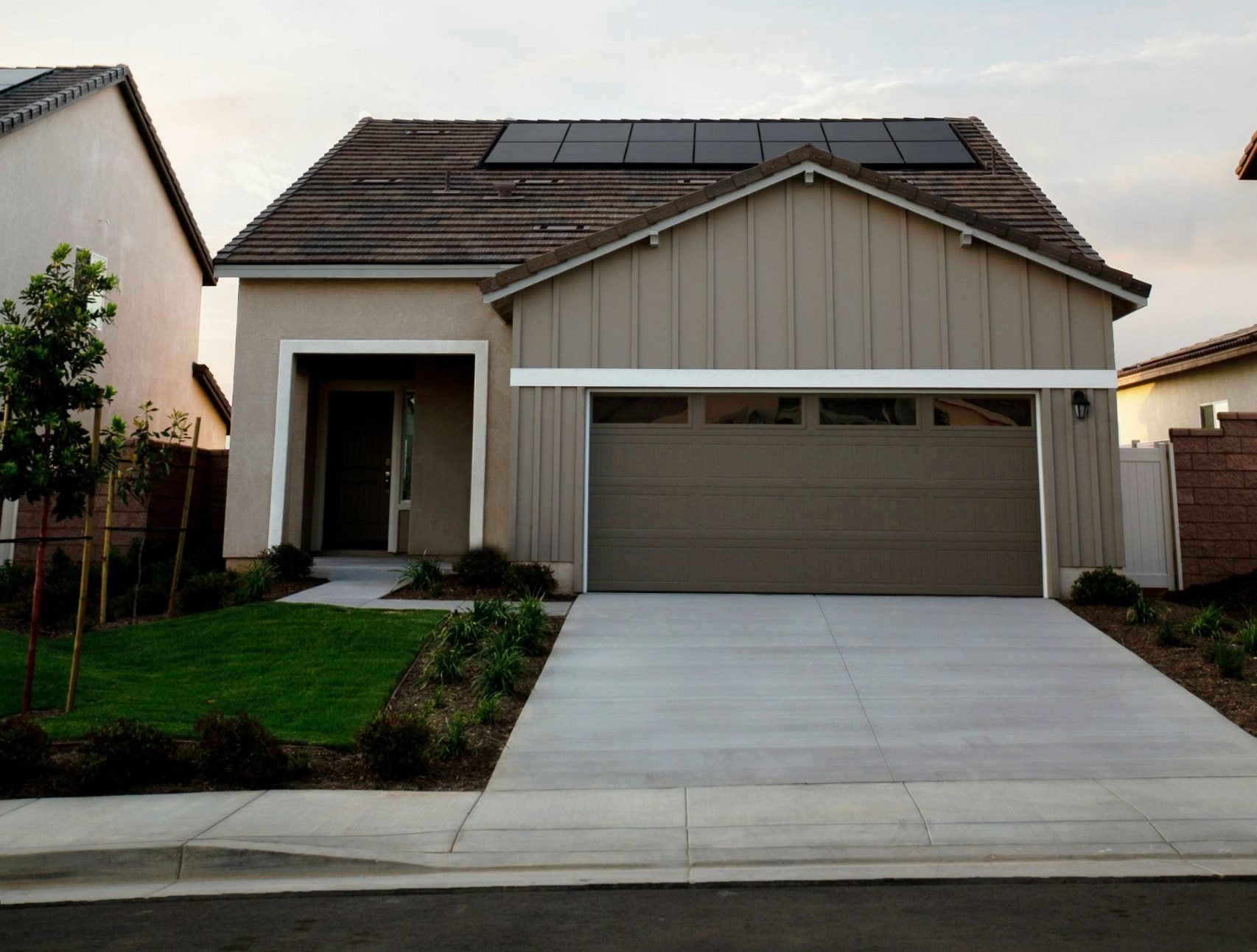Social Links Widget
Click here to edit the Social Media Links settings. This text will not be visible on the front end.
Rural vs. Urban Living in Saskatchewan: Pros and Cons

Choosing between rural and urban living is a significant decision that can shape your lifestyle, community, and overall quality of life. Saskatchewan, with its vast landscapes and vibrant cities, offers diverse living options that cater to a wide range of preferences. Whether you’re drawn to the hustle and bustle of city life or the tranquility of the countryside, understanding the pros and cons of each can help you make an informed choice. Here’s a closer look at what rural and urban living in Saskatchewan have to offer.
Urban Living: The Pros and Cons
Urban living in Saskatchewan, particularly in cities like Saskatoon and Regina, provides residents with access to amenities, entertainment, and a more dynamic lifestyle. However, it also comes with its own set of challenges.
Pros:
- Convenience and Amenities: One of the biggest advantages of urban living is access to a wide range of amenities, including shopping centers, restaurants, healthcare facilities, and entertainment options. Everything you need is often just a short drive or walk away.
- Employment Opportunities: Cities tend to offer more diverse job opportunities, particularly in sectors like education, healthcare, technology, and government. This makes urban areas appealing to professionals seeking career growth.
- Cultural and Social Activities: Urban areas in Saskatchewan boast a vibrant cultural scene, with theaters, museums, galleries, and live music venues. Additionally, social events, festivals, and community gatherings are more frequent in cities, offering plenty of opportunities to meet new people and engage in activities.
- Public Transportation: Cities like Saskatoon and Regina offer public transportation options, making it easier for residents to commute without relying solely on personal vehicles. This is particularly beneficial for those looking to reduce their carbon footprint or avoid the hassles of driving.
Cons:
- Cost of Living: Urban living often comes with a higher cost of living, particularly in terms of housing. Property prices and rent in city centers can be significantly higher than in rural areas, which might be a drawback for those on a tight budget.
- Traffic and Congestion: While public transportation is a plus, traffic congestion can be a downside of urban living. Commuting during peak hours can be time-consuming, and parking can sometimes be a challenge.
- Noise and Crowds: The hustle and bustle of city life can also mean more noise, crowds, and less privacy. For those who value peace and quiet, this might be a considerable disadvantage.
- Limited Green Space: While cities do have parks and recreational areas, they may not offer the same level of natural beauty and open space that rural areas provide. Urban dwellers might miss out on the expansive landscapes and outdoor activities that are more accessible in rural settings.
Rural Living: The Pros and Cons
Rural living in Saskatchewan offers a stark contrast to city life, with wide-open spaces, tight-knit communities, and a slower pace. However, it also comes with its unique set of challenges.
Pros:
- Peace and Tranquility: One of the most significant advantages of rural living is the peace and tranquility that comes with it. Away from the noise and crowds of the city, rural areas offer a slower pace of life, where you can enjoy nature and wide-open spaces.
- Lower Cost of Living: Generally, the cost of living in rural areas is lower, particularly in terms of housing. You can often get more property for your money, making it an attractive option for those looking to own a larger home or more land.
- Strong Sense of Community: Rural communities in Saskatchewan are often close-knit, where neighbors know each other and community events bring people together. This can create a strong sense of belonging and support.
- Access to Outdoor Activities: For nature lovers, rural living offers unparalleled access to outdoor activities such as hiking, fishing, hunting, and camping. The natural beauty of Saskatchewan’s countryside is right at your doorstep.
Cons:
- Limited Amenities: While rural living offers tranquility, it often comes with limited access to amenities. Shopping, dining, and healthcare facilities may be farther away, requiring longer drives for everyday needs.
- Fewer Employment Opportunities: Rural areas typically have fewer job opportunities, particularly in specialized fields. This can be a drawback for those with specific career goals or those looking for diverse employment options.
- Isolation: The peacefulness of rural life can sometimes lead to feelings of isolation, particularly for those who are used to the social opportunities and cultural activities available in urban areas.
- Limited Public Services: In rural areas, access to public services like transportation, internet, and utilities might be limited or less reliable. This can be a significant consideration for those who rely on these services for work or personal needs.
Making the Choice: What’s Right for You?
Deciding between rural and urban living in Saskatchewan ultimately comes down to your personal preferences, lifestyle, and priorities. If you thrive in a fast-paced environment with access to diverse amenities and cultural activities, urban living might be the best fit. On the other hand, if you value peace, space, and a strong sense of community, rural living could offer the lifestyle you’re seeking.
For families, professionals, retirees, or anyone in between, Saskatchewan offers a variety of living options that can cater to different needs and desires. Whether you’re considering a move to the city or the countryside, understanding the pros and cons of each will help you make the best decision for your future.
Ready to explore your options? Whether you’re interested in urban condos or rural properties, contact me today for expert advice and personalized service. I’m here to help you find the perfect home that suits your lifestyle in beautiful Saskatchewan.
Real Estate Myths Debunked: Common Misconceptions About Buying and Selling Homes

Navigating the real estate market can be daunting, especially with the plethora of myths and misconceptions that abound. As a Canadian realtor, I’ve encountered many of these myths firsthand. Let’s debunk some of the most common misconceptions about buying and selling homes to help you make informed decisions.
Myth 1: You Must Have a 20% Down Payment to Buy a Home
Truth: While a 20% down payment can help you avoid paying for mortgage insurance, it’s not a requirement. In Canada, you can buy a home with as little as 5% down payment for homes under $500,000, and 10% for the portion of the price over $500,000 up to $1 million. Various programs, such as the First-Time Home Buyer Incentive, can also assist with lower down payment options.
Myth 2: Spring is the Best Time to Buy or Sell a Home
Truth: Although spring is traditionally a busy season in real estate, it’s not the only time to buy or sell. Each season has its advantages. For example, selling in the winter may mean less competition and more motivated buyers, while buying in the fall could offer more negotiating power as sellers aim to close before the year ends.
Myth 3: A Home Inspection Isn’t Necessary for New Homes
Truth: Even new homes can have issues. A professional home inspection can uncover hidden problems that need addressing before you finalize your purchase. Skipping an inspection can lead to costly repairs down the line, regardless of the home’s age.
Myth 4: The Listing Price is Non-Negotiable
Truth: The listing price is often a starting point for negotiations. Depending on market conditions, the property, and the seller’s circumstances, there might be room to negotiate a lower price or additional terms, such as repairs or closing costs.
Myth 5: Open Houses are Essential to Sell a Home
Truth: While open houses can generate interest, they’re not always necessary to sell a home. Many buyers start their search online, and virtual tours, high-quality photos, and targeted marketing can be just as effective in showcasing a property.
Myth 6: You Should Renovate Your Home Before Selling
Truth: Not all renovations will yield a high return on investment. It’s essential to focus on improvements that increase your home’s marketability and value. Consulting with a realtor can help you determine which upgrades are worth the investment and which ones to avoid.
Myth 7: You Don’t Need a Realtor to Buy or Sell a Home
Truth: While it’s possible to buy or sell a home without a realtor, it’s not advisable. Realtors provide valuable services, including market analysis, negotiation expertise, and legal knowledge. They can help you navigate the complexities of the real estate process and ensure you get the best deal possible.
Myth 8: The Highest Offer is Always the Best Offer
Truth: The highest offer may not always be the best. Other factors, such as financing terms, contingencies, and the buyer’s flexibility on the closing date, can significantly impact the attractiveness of an offer. Sellers should consider the overall terms and conditions, not just the price.
Myth 9: You Should Price Your Home High to Leave Room for Negotiation
Truth: Overpricing your home can deter potential buyers and lead to a longer time on the market. It’s better to price your home competitively based on a comparative market analysis. This strategy can attract more interest and potentially lead to multiple offers, driving up the final sale price.
Myth 10: Real Estate Agents are Expensive and Not Worth the Cost
Truth: Realtors earn their commission by providing expertise, marketing, negotiation skills, and support throughout the buying or selling process. Their knowledge and resources can save you time, reduce stress, and often result in better financial outcomes than navigating the process alone.
The real estate market is filled with myths that can mislead buyers and sellers. By understanding the truth behind these common misconceptions, you can make more informed decisions and achieve your real estate goals more effectively. Whether you’re buying your first home or selling your property, having accurate information and the right professional support is crucial to success. I’m here to help you navigate the real estate market with confidence.
How to Choose the Right Neighbourhood for Your Family

Choosing the right neighbourhood is one of the most important decisions you’ll make when buying a home. Your neighbourhood will impact your family’s lifestyle, sense of community, and even the long-term value of your investment. As a trusted real estate agent, I’m here to guide you through the process of finding the perfect neighbourhood that meets your family’s needs and preferences. Here’s how to make an informed choice.
1. Prioritize Your Family’s Needs and Preferences
Start by making a list of what’s important to your family. Consider factors such as:
- Safety: Look for neighbourhoods with low crime rates. The Saskatoon police department website can provide crime statistics.
- Schools: If you have children or plan to in the future, research the quality of local schools.
- Commute: Consider the distance to work and the ease of access to public transportation. A shorter commute can improve your quality of life and save money on transportation costs.
- Amenities: Think about the amenities that are important to your family, such as parks, playgrounds, grocery stores, restaurants, and healthcare facilities.
- Community: Consider the community vibe. Do you prefer a quiet, suburban area or a lively, urban neighbourhood? Attend local events or visit community centers to get a feel for the neighbourhood.
2. Research Property Values and Market Trends
Understanding the real estate market in a potential neighbourhood can help you make a sound investment. Look for:
- Property Values: Investigate the current property values and how they’ve changed over the past few years. This can indicate the stability and growth potential of the area.
- Market Trends: Pay attention to market trends. Are homes selling quickly or staying on the market for a long time? Are prices rising or falling? This information can give you insights into the future value of your investment.
3. Visit the Neighbourhood at Different Times
A neighbourhood can have a different feel at various times of the day and week. Visit during the morning, afternoon, and evening to get a comprehensive understanding of the area’s dynamics. Pay attention to:
- Traffic Patterns: Is there heavy traffic during rush hours? Are there any noise issues from nearby highways or businesses?
- Activity Levels: Are there people out and about? Do you see children playing and neighbours interacting?
- Safety: Observe the neighbourhood’s safety at night. Are the streets well-lit? Do you feel comfortable walking around?
4. Talk to Residents and Local Businesses
Engaging with current residents and local business owners can provide valuable insights into the neighbourhood. Ask them about:
- Quality of Life: What do they like and dislike about living in the area? How is the sense of community?
- Local Issues: Are there any ongoing issues or concerns, such as planned construction projects, noise, or safety concerns?
- Recommendations: What amenities and services do they recommend? Are there any hidden gems, like parks or cafes, that you might not find on a map?
5. Consider Future Development Plans
Future development can significantly impact a neighbourhood’s desirability and property values. Check with the local planning department for information on:
- Upcoming Projects: Are there any planned developments, such as new schools, shopping centers, or public transportation projects?
- Zoning Changes: Are there any proposed zoning changes that could affect the neighbourhood’s character or property values?
Choosing the right neighbourhood for your family is a crucial step in finding your dream home. By prioritizing your family’s needs, researching property values, visiting the area at different times, talking to residents, and considering future developments, you can make an informed decision that will benefit your family for years to come.
As your dedicated real estate agent, I’m here to assist you every step of the way. Contact me today to start your journey towards finding the perfect neighbourhood for your family.
Smart Financial Planning: Essential Tips for Millennial Homebuyers

Welcome to our blog! As a Saskatchewan-based real estate agency, we understand that buying a home is one of the most significant financial decisions you’ll make. If you’re a millennial looking to step into the property market, it’s crucial to have your personal finances in order. Here are some essential tips to help you navigate this exciting journey.
1. Understand Your Financial Health
Before diving into the real estate market, take a good look at your financial situation. Calculate your net worth by subtracting your liabilities (debts, loans, etc.) from your assets (savings, investments, property). This will give you a clear picture of your financial health and help you set realistic home-buying goals.
2. Create a Budget and Stick to It
Budgeting is the cornerstone of financial stability. Track your income and expenses to see where your money is going. Categorize your spending into essentials (rent, groceries, utilities) and non-essentials (entertainment, dining out). This will help you identify areas where you can cut back and save more for your down payment.
3. Save for a Down Payment
In Saskatchewan, a typical down payment ranges from 5% to 20% of the home’s purchase price. Start saving early by setting aside a fixed portion of your income each month. Consider opening a high-interest savings account to maximize your savings. Remember, the larger your down payment, the lower your monthly mortgage payments will be.
4. Pay Down Debt
High-interest debts, like credit card balances, can eat into your savings and affect your ability to secure a mortgage. Prioritize paying down these debts to improve your credit score and increase your borrowing power. Consider using the snowball or avalanche method to tackle your debts effectively.
5. Build an Emergency Fund
Life is unpredictable, and unexpected expenses can arise at any time. Aim to save at least three to six months’ worth of living expenses in an easily accessible emergency fund. This will provide a financial cushion and prevent you from dipping into your home savings in case of emergencies.
6. Understand Mortgage Options
There are various mortgage options available, each with its pros and cons. Fixed-rate mortgages offer stability with consistent monthly payments, while variable-rate mortgages can be lower but fluctuate with market rates. Research and compare different mortgage products to find the one that best fits your financial situation and long-term goals.
7. Get Pre-Approved for a Mortgage
Getting pre-approved for a mortgage gives you a clear understanding of how much you can borrow and shows sellers that you’re a serious buyer. It also helps streamline the home-buying process and can give you a competitive edge in a hot market. Gather all necessary documents, such as proof of income, tax returns, and bank statements, before meeting with a lender.
8. Consider Additional Costs
When budgeting for a home, don’t forget to factor in additional costs beyond the purchase price. These can include property taxes, home insurance, maintenance and repairs, utilities, and closing costs. Having a comprehensive understanding of these expenses will help you avoid any financial surprises down the road.
9. Seek Professional Advice
Navigating the real estate market can be complex. Don’t hesitate to seek advice from financial advisors, real estate agents, and mortgage brokers. They can provide valuable insights and help you make informed decisions throughout the home-buying process.
10. Stay Informed and Flexible
The real estate market is dynamic, and conditions can change rapidly. Stay informed about market trends and be flexible with your home-buying strategy. Whether it’s adjusting your budget or exploring different neighborhoods, being adaptable can help you find the perfect home within your financial means.
Buying a home is a significant milestone, and being financially prepared is key to making this dream a reality. With a little work and patience you can build a strong financial foundation and confidently navigate the Saskatchewan real estate market. Remember, I’m here to help you every step of the way. Happy home hunting!
Embracing Eco-Friendly Homes in Saskatchewan: Benefits and How-To Guide

In the heart of Canada, where the prairies meet the sky, Saskatchewan residents are increasingly turning their attention to eco-friendly homes. This movement towards sustainability is driven by a desire to reduce environmental impact and embrace a healthier, more cost-effective lifestyle. Whether you’re considering purchasing a green home or converting your current property, understanding the benefits and processes involved is key.
Benefits of Eco-Friendly Homes
1. Energy Efficiency: Eco-friendly homes are designed to consume less energy through high-efficiency windows, better insulation, and smart home technologies. This not only helps the environment but also significantly reduces utility bills.
2. Enhanced Indoor Air Quality: Green homes often incorporate materials that are low in volatile organic compounds (VOCs) and other pollutants. This can lead to better indoor air quality, which is beneficial for those suffering from allergies or respiratory issues.
3. Increased Property Value: As demand for sustainable living increases, green homes tend to have a higher resale value. In Saskatchewan, where awareness of sustainability is growing, this trend is particularly evident.
4. Reduced Environmental Impact: By utilizing renewable materials and energy sources, such as solar panels or geothermal systems, eco-friendly homes help reduce your carbon footprint, an important consideration in a province known for its natural beauty.
The Buying Process
1. Research: Start by researching homes that boast eco-friendly certifications like LEED (Leadership in Energy and Environmental Design) or ENERGY STAR. In Saskatchewan, these certifications ensure that the property meets stringent sustainability standards.
2. Financing: Look into special mortgages or grants available for purchasing eco-friendly homes. Programs such as the Canada Greener Homes Grant can provide financial support for both buying and renovating green homes.
3. Inspection: Consider hiring an inspector with experience in eco-friendly properties. They can assess the efficiency of systems like HVAC, plumbing, and electrical against green standards.
4. Location: Choosing a location that supports a sustainable lifestyle is also crucial. Proximity to public transport, local amenities, and even the home’s orientation can impact its environmental footprint.
Converting Your Current Home
1. Energy Audit: Begin with a professional energy audit to identify where improvements can be made. This audit will highlight how you can enhance your home’s energy efficiency.
2. Retrofitting: Key areas to focus on include insulation, windows, and heating systems. In Saskatchewan’s climate, ensuring that your home is well-insulated is essential for managing heating costs.
3. Renewable Energy Sources: Consider installing solar panels or investing in wind power solutions, especially in rural areas where these technologies can be more easily accommodated.
4. Water Conservation: Implement low-flow fixtures and consider rainwater harvesting systems to reduce your water usage.
For those living in Saskatchewan, transitioning to an eco-friendly home is not just a personal investment but a commitment to preserving the stunning natural landscape for future generations. By making the shift to an eco-friendly home, you are not only investing in your health and savings but also contributing to a sustainable future for all.
Budgeting 101: Saving for a New Home

Homes aren’t cheap. And with a minimum 5% down payment needed to secure a mortgage, saving enough can feel impossible. Saving to buy a home requires discipline and careful budgeting. Here are some tips to help you get started:
1. Set a Goal
Without a target in mind, saving can feel intangible. Setting a clear goal helps you to stay motivated and focused. Look at homes for sale in your area and get an idea of what you would like to be able to afford. You can then determine how much you’ll need to save. For added motivation, give yourself a target date for achieving that savings. This can help curb unnecessary spending while saving up for a down payment.
2. Create a Budget
To budget, you will need to budget (obviously!). Make a detailed list of your income and expenses, so you have a clear idea of what you have to set aside. Track your spending habits and identify where you can cut back. Then allocate a specific amount each month toward saving for a new home.
Pro Tip: Set up an automatic transfer between your chequing and savings accounts on your dedicated payday. This way, you won’t need to remember to manually add the money each month. Plus, when it’s out of sight, it’s usually out of mind, and you’ll be less likely to overspend!
3. Cut Back on Spending
As I mentioned in creating your budget, it’s essential to reassess your spending habits to reduce non-essential spending. Consider meal planning to save on eating out and cut back on entertainment. Before spending, think about whether it is a want or a need.
4. Minimize Debt
By reducing your existing debt, you will free up more money to put toward saving for a new home. Prioritize paying off high-interest loans, like credit cards, and avoid adding new debts while saving. If you want to buy a new home, maybe that new Range Rover will have to wait…
5. Set Aside Rebates & Bonuses
While it may seem tempting to put that climate action incentive payment toward a nice meal or a new gadget, consider the boost it could make in your savings plan. Plan to put tax returns, government payments, and other bonuses throughout the year directly into your savings. This way, you can eliminate the temptation of overspending and put that supplementary income toward saving for a new home.
6. Research Government Programs
The Government of Canada has several ways to help homebuyers—particularly first-time homebuyers—afford a down payment. These include the Home Buyers’ Amount, First Time Home Buyer Incentive, First Home Savings Account, and GST/HST New Housing Rebates. To learn more about these programs and find out if you are eligible, visit their Buying a Home page or talk to your financial advisor.
By following these budgeting tips, saving for a new home can become much more attainable. But it’s important to remember that even with these tips, you must remain patient and persistent. Saving for a down payment takes time, and you have to stay committed to your goal for the long term. Unexpected expenses can happen, and patience is vital to getting through those circumstances. Celebrate the small wins along the way, and remember that every dollar saved is another step closer to owning a home!
My Top Tips for New Homeowners

Congratulations—you bought a home! Whether you’ve just gotten the keys or are anxiously awaiting possession day, there are probably a million things running through your mind. Between unpacking, decorating, possibly renovating, and all the rest of it, it can be hard to know where to begin. That’s why I’ve gone ahead and put together my top tips for new homeowners to help you get started.
1. Budgeting
Creating a budget is an essential first step to owning a home. Mortgage payments can be more (but also sometimes less!) than the average rent, so planning for how best to save and spend your money can go a long way in relieving financial stress. Start by making a list of your expenses every month. Include everything from your phone and Netflix bills to your mortgage payments and property taxes. If it comes out of your bank account every month, make sure it is there. This can give you a realistic expectation of what you need and how much you may have left over for non-essentials to prevent overspending.
2. Make Yourself at Home
Sure, you took a walkthrough of the house before you bought it, and likely during the home inspection, too. But everyone knows it can take a while to really feel at home in your house until you get to know it a little better. Take time to look around every room and familiarize yourself with your new surroundings. Find the important things, like your water shut-off valve and electrical panels, to make maintenance easier. Who knows! You may even find a new favourite feature this time around.
3. Plan for Regular Maintenance
Regular home maintenance is one of the most important parts of owning a home. This keeps everything in working order and prevents unnecessary stress from unexpected problems. Create a plan and schedule in the recurring tasks that need to be accomplished throughout the year. This includes changing air filters, cleaning the gutters, testing smoke detectors, indoor plant care, and routine cleaning.
4. Get a Toolbox
If you don’t already have a toolbox, getting one is one of my best tips for new homeowners. Hammers, screwdrivers, levels, and drills are essentials around the house, and you can’t always plan for when you’ll need one. Expect the unexpected and keep essential tools on-hand in an easy to find place. Just don’t forget to put them back when you’re finished!
5. Meet Your Neighbours
While the digital age has made meeting people easier in some ways, it can never replace the value of face-to-face interactions. And when you buy a new home, getting to know your neighbours can be a lifesaver. They can provide a helping hand in an emergency, keep an eye on your house while you are away, and foster a sense of community.
6. Create an Emergency Plan
Though we may pray they never do, emergencies happen. From power outages to house fires—you never know when the unexpected could hit, and it is better to be prepared. Make sure to have a plan in place and go through it with everyone in the family so you’re all on the same page. Create an emergency kit with the essentials, know where the first-aid supplies and fire extinguishers are, and have an evacuation plan ready.
7. Enjoy!
It’s not every day that you get to move into a new home that is all yours. Yes, there’s a lot of responsibility in homeownership, but there should also be some fun, too. It’s a significant accomplishment and something to be proud of. Take a moment to celebrate with a housewarming party or even just a quiet bottle of wine on the living room floor—you deserve it!
What is the Best Time to Move?

You’ve seen it. It’s everywhere! Inventory remains at an all-time low in Saskatoon, and with interest rates also staying attractively low, demand remains high. With eager buyers jumping at the opportunity to buy a home, prices are rising, piquing many homeowners’ interest in selling.
Whether you’re a first-time home buyer hoping to take advantage of the fantastic interest rates or a seller hoping to get more for your home, you’ve likely asked, “Is it a good time to move?” There are a lot of factors to take into account when considering the best time to move. If you’re currently deciding when to move, here are some of the factors to consider:
Why Are You Moving?
Depending on why you are moving or considering a move, your timeframe for when to move could change considerably.
#1 – You Are Relocating for Work. If you are moving to Saskatoon for a new job or position, you are likely working with a set deadline. This means you will have strict guidelines both in searching for a home and planning a move when it comes to dates. If you are simply moving within the city to lessen your commute or make it more convenient, you will have considerably more flexibility.
#2 – Looking for a Better Neighbourhood. Another reason why many families choose to move is to find the perfect neighbourhood. While this doesn’t give you any time constraints to work within, it’s important to note that it can take some time if you are particular about the neighbourhoods you are searching in. You may need to wait for the perfect property to come on the market.
#3 – Moving to a Bigger Home. Growing families often find themselves searching for more space, which may mean moving to a bigger home. While a great reason to be making your move, it shouldn’t interfere with any timing you may be planning for.
#4 – Downsizing to a Smaller Home. When the kids have all flown the nest, and you no longer need the 5-bedroom, 3-bathroom house, it might be time to downsize. Again, similar to moving to a bigger home, this shouldn’t interfere with planning the timing of your move.
#5 – Taking Advantage of Interest Rates. If you’ve been pre-approved for a mortgage with an attractive interest rate you don’t want to miss out on, you will need to expedite your home search to fit your locked-in rate’s deadline. These typically stay in effect for 60-90 days, which will be about when you should plan to buy a new home. However, if you’d prefer to push off the move beyond that time, you can always talk to your REALTOR® about moving the possession date to a time that works better for you.
#6 – Making the Most of Market Trends. If you have a home to sell and Saskatoon is in a seller’s market, you may want to take advantage of that to get more value for your home. Especially in a high-demand market, this could mean a quicker move, so talk to your REALTOR® about how quickly you might expect to sell. That way, you can get a better idea for planning your move.
The Best Time of Year to Move
Knowing how the reason you are moving influences the timing of your move, you can start to plan the “when” of it all. Each season has pros and cons for moving, so here’s what to consider when deciding the best time of year to move for you and your family.
Spring is traditionally when the real estate market in Saskatoon begins to get busiest. The weather starts to warm, people start coming out of the homes they’ve been trapped in all winter and are eager for a change of scenery. Some pros to moving in spring are that you’ll be settled into your new home in time to relax for the summer holidays, and the weather tends to be much more temperate—not too cold and not too hot. However, it can also be a hectic time for kids in school, particularly those in high school facing exam season. Moving companies are also getting busier, so you may need to be more flexible with dates to make it work.
Summer, particularly early summer, tends to be the busiest moving season as homebuyers who bought in spring come up to their possession dates. Moving in summer can be a great thing—the kids are out of school, it may be easier to take vacation time, and the weather is usually warm and sunny. However, moving companies are in their highest-demand season, which means you may have a harder time picking dates and can even expect to pay a little more than slower seasons.
Fall is when the Saskatoon real estate market tends to slow down as kids return to school and the vacation replies start to disappear. This cooler market may make moving in fall the ideal choice for you, with less demand for moving companies and typically easier conditions for buying a house. Plus, you will be nice and settled in just in time to show off to friends and family over the holidays! However, it can also be a little more complicated if you have kids in school, especially if you might be moving to a new school district.
Winter is usually the slowest season in real estate, with colder weather keeping people indoors. This can make moving in winter more attractive, with market conditions at their least stressful and moving companies at their most available (sometimes even offering discounted rates!). However, you will need to battle the elements on moving day, something most of us avoid during winter in Saskatchewan, and you may be in the process of moving over the holidays, which can already be stressful enough.
So, when it really comes down to it, there is no true “best time to move,” only the best time for you and your family. No matter when you decide to make your move, though, there are a few tried and true ways to make it as easy as possible. Your experienced REALTOR® will be able to walk you through all of the best tips and tricks for a stress-free move. And if you still need help deciding when to do it, they can help with that, too!
Top 5 Benefits of Owning a Home

I’m not going to beat around the bush; a house is a big purchase and a huge life milestone. You want to make sure you are making the right choice. Have you been wondering if it is worth it to take the leap? Are you overwhelmed by all the information out there? While there are many benefits of owning a home versus renting one, here are some of the top ones you’ll want to consider!
#1 – It’s a Great Way to Build Equity
First off, what does equity mean? Equity refers to the probable market value of your property against any liens (such as a mortgage). The longer you own a home and pay towards the balance of any liens, the liens will gradually decrease as the property value and your equity in the home increase. The larger the home equity you have, the more borrowing and purchasing power you earn towards loans for home improvements, funding your children’s education, or other consumer goods such as a car.
While you build your equity as a homeowner with regular payments, your credit score will also receive a nice boost!

#2 – Your Investment Gets Better With Time
Investing in buying a house provides a better return than most other investments, such as a car. Depreciation begins as soon as you drive the car off the lot, where owning a home behaves in the opposite, appreciating in value over time (depending on market conditions).
Though even an experienced local REALTOR® cannot predict precisely what will happen with your home value in the coming years, they can provide past values for the neighbourhood. Looking towards the trends on values on homes in the area will help gain some understanding of what you can expect.
#3 – Less Expensive Than Renting in the Long Run
Yes, really! When buying a home, there are, of course, many upfront costs—down payment, appraisal fees, homeowner insurance, etc. And, similarly, you are paying a certain amount per month. However, as stated in the first point, you are paying to own the home, and your personal net worth increases. Whereas, with rental properties, you are paying to use the landlord’s property to live.
Check out Renting vs. Buying: Which is Better For You for a more in-depth comparison!
#4 – Plant Your Roots
Options for rental properties are often limited in terms of location. Buying and owning your home means you get to CHOOSE where you want to live; the neighborhood and proximity to schools, parks, your employer, and other amenities. By this choice, you can be sure you will have pride in ownership, not only in your property but your community, by forming relationships with fellow neighbors, local services & politicians and taking part in community events.

#5 – Freedom to Customize Your Space
This might be the last on the list, but it is certainly not the least. Actually, this might be the best reason of them all! While renting, you are at the mercy of your landlord in terms of colour and style choices made and cannot alter them. Ownership offers you the freedom to make changes. Paint the walls, rip up that carpet, install a secret door—the choice is yours! To make the deal even sweeter, not only will these changes make the house feel more like home, but they can elevate your property’s value as well.
Of course, there are countless other benefits and considerations for purchasing a house. However, the best way to ensure you are finding the perfect home for you and your family is to work with your very own REALTOR®.
Don’t have one? I’d be happy to help—contact me today!
4 Tips for Buying a House

Buying a house isn’t like buying a kitchen appliance. You don’t have the luxury of researching, reading reviews, price matching, and using all of that to choose the absolute right fit before bringing it home. And if it doesn’t quite fit as well as you thought, you have the opportunity to return it for an exchange or refund.
Instead, when buying a home, you are limited to the ever-changing availability of the real estate market inventory, which may or may not contain a home that fits all your wants and needs. This is especially true in a seller’s market, like we are currently experiencing in Saskatoon real estate. And if you do find one outside of your budget, saving up just a little more and coming back to it usually isn’t an option. There are no reviews other than those of the sellers, and if you feel like you’ve made a wrong choice, a refund is not an option. So how do you know you’re making the right choice?
Well, here are just a few tips for buying a house to help you along the way:
Tip #1 – Keep Looking Until You Find the Right Home in Your Price Range
Every market is different, and you may need to concede some of the items on your wish list to find the right house. Things like the neighborhood your dream home is in, the year it was built, and its condition can drastically change its value.
Don’t give up! And rely on the advice of your REALTOR®—they’re a seasoned professional. A house is one of the most significant investments you’ll ever make, so you shouldn’t need to feel like you are settling simply because you are in a rush.

Tip #2 – Pay Attention to Location & Layout
Hate the decorations? Disgusted by the paint colors? Get over it! These are all things that can be fixed later on. However, nothing can be done about a bad neighbourhood, crummy floor plan, or a 20-minute commute to the closest grocery store, so don’t compromise on those.
Look for a neighbourhood and layout that fits your lifestyle. And for a good deal on buying a home, be open-minded about that dated kitchen tile.
Tip #3 – Think About Home Value Growth
Don’t just go for a pretty porch or spacious yard; look for a property that will grow in value over time. Do some research on the history of home values and businesses in that neighbourhood and the surrounding area, or ask your REALTOR® about the trends they have seen. Are home values rising? Is the number of businesses increasing? Those are good signs!
And if you can, try to find a house at the bottom price range in the best community you can afford. No one wants to be stuck trying to sell a $300,000 home to future buyers who are shopping in a $200,000 neighbourhood.

Tip #4 – Ask Questions During Showings
Ask tons of questions when you’re touring the house to make sure it’s genuinely your ideal home. Your real estate agent should be able to help you develop a list of relevant questions to ask, but here are a few standards to keep in mind just in case:
What is included in the sale? Does the price include things like appliances, light fixtures, or the hot tub?
When were the appliances updated last? Look at the plumbing, HVAC, septic tank, fridge, oven, and the washer and dryer.
How old is the roof? When was the last time it was looked at for any potential damage or leaks?
Are there signs of any pest infestations or water damage? Quite often, these can be visible at face value, but ask the sellers if there may have been anything they may have encountered beneath the surface.
What is the home like in winter and summer? Is there a south-facing window that turns the living room into a sauna without a good pair of blinds? Is there a draft that doubles the electricity bill in the winter just to stay warm?
Of course, there are countless other tips that I could give you for buying a house, many of which I mentioned in my Official Guide to House Hunting. However, the best way to ensure you are finding the perfect home for you and your family is to work with your very own REALTOR®.
Don’t have one? I’d be happy to help—contact me today!

 Facebook
Facebook
 X
X
 Pinterest
Pinterest
 Copy Link
Copy Link